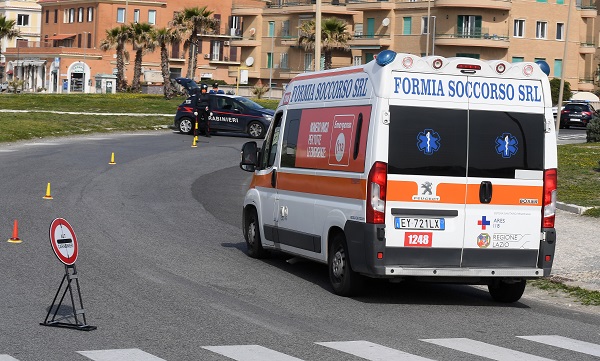Rome, (Samajweekly) A further 369 COVID-19 patients had died in the past 24 hours in Italy, bringing the country’s death toll to 29,684, out of total infection cases of 214,457, according to fresh figures.
The country’s Civil Protection Department registered 91,528 active infections on Wednesday, down sharply from 98,467 a day earlier. The day also saw 8,014 additional recoveries, bringing that total to 93,245 — higher than the active infections for the first time since the pandemic struck the northern Lombardy region in late February, Xinhua news agency reported.
Yet, the Civil Protection specified, “such a high number of patients cured and discharged (in the day) is due to an update on data from the Lombardy region that also refers to the past days.”
Of those infected, 1,333 are in intensive care, down by 94 compared to Tuesday, and 15,769 are hospitalized in normal wards, down by 501. The rest, or 81 per cent of those who tested positive, is in isolation at home.
As Italians faced their third day of a partial return to normality — after the lockdown was eased on May 4, the European Union (EU) authorities warned the Italian economy might contract more than other big European countries due to the impact of the COVID-19 crisis.
In its Spring 2020 Economic Forecast issued on Wednesday, the European Commission forecast the bloc would go towards “a deep and uneven recession” and an equally uneven recovery.
Italy, as one of the countries worst hit by the pandemic at the global level, its GDP was predicted to shrink by 9.5 per cent this year, second only to Greece (9.7 per cent).
“The COVID-19 pandemic and the related containment measures are set to push Italy’s economy into a deep recession,” the Commission said.
“A technical rebound is expected in the second half of 2020, supported by policy measures, and partial recovery is expected to follow in 2021.”
According to the report, the Italian GDP would grow by 6.5 per cent in 2021.
The negative forecast did not come unexpectedly to Italian authorities. In late April already, in its Economic and Financial Document (DEF) — containing the country’s multi-year financial and economic plan, the Italian cabinet estimated a GDP drop by almost 6 per cent in 2020.
On Wednesday, in an interview with Il Fatto Quotidiano daily, Prime Minister Giuseppe Conte further confirmed the aftermath of the COVID-19 emergency would be “Italy’s toughest challenge after World War II.”
“With such a drop in GDP, the economic effects will be very painful,” Conte said.
“This is one reason why we have launched a first 25 billion euros (US $27 billion) financial packet and a second one worth 55 billion euros: the most powerful state intervention in recent years,” he explained.
Conte anticipated the cabinet later in May should deliver a third decree aimed at simplifying the country’s red tape in terms of investments.
From a different perspective, however, the prime minister sounded quite satisfied with the way Italians have so far behaved after the easing of some restrictions on productive activities and personal movements.
“The citizens’ sense of responsibility, and overall compliance with the rules, has been confirmed … and this makes me confident the epidemic curve will remain under control,” he said.
In related news on Wednesday, the Economy and Finance Ministry stated 1.6 million applications to join a loan moratorium — worth almost 177 billion euros overall — have so far been submitted to Italian banks, according to preliminary data.
In addition, small and medium enterprises (SMEs) have filed 91,973 requests (worth 5.6 billion euros) to the Ministry for Economic Development in order to be admitted to the state guarantee scheme supporting a debt moratorium from banks to SMEs.
The scheme was passed by Conte’s cabinet in its first COVID-19 emergency decree (dubbed Cure Italy Decree) in order to help SMEs affected by the pandemic. The scheme was later approved by the European Commission.
Italy entered into a national lockdown on March 10 to contain the pandemic. The lockdown was partly lifted on Monday as the country entered into the so-called “Phase Two,” involving the gradual resumption of social, economic and productive activities.










